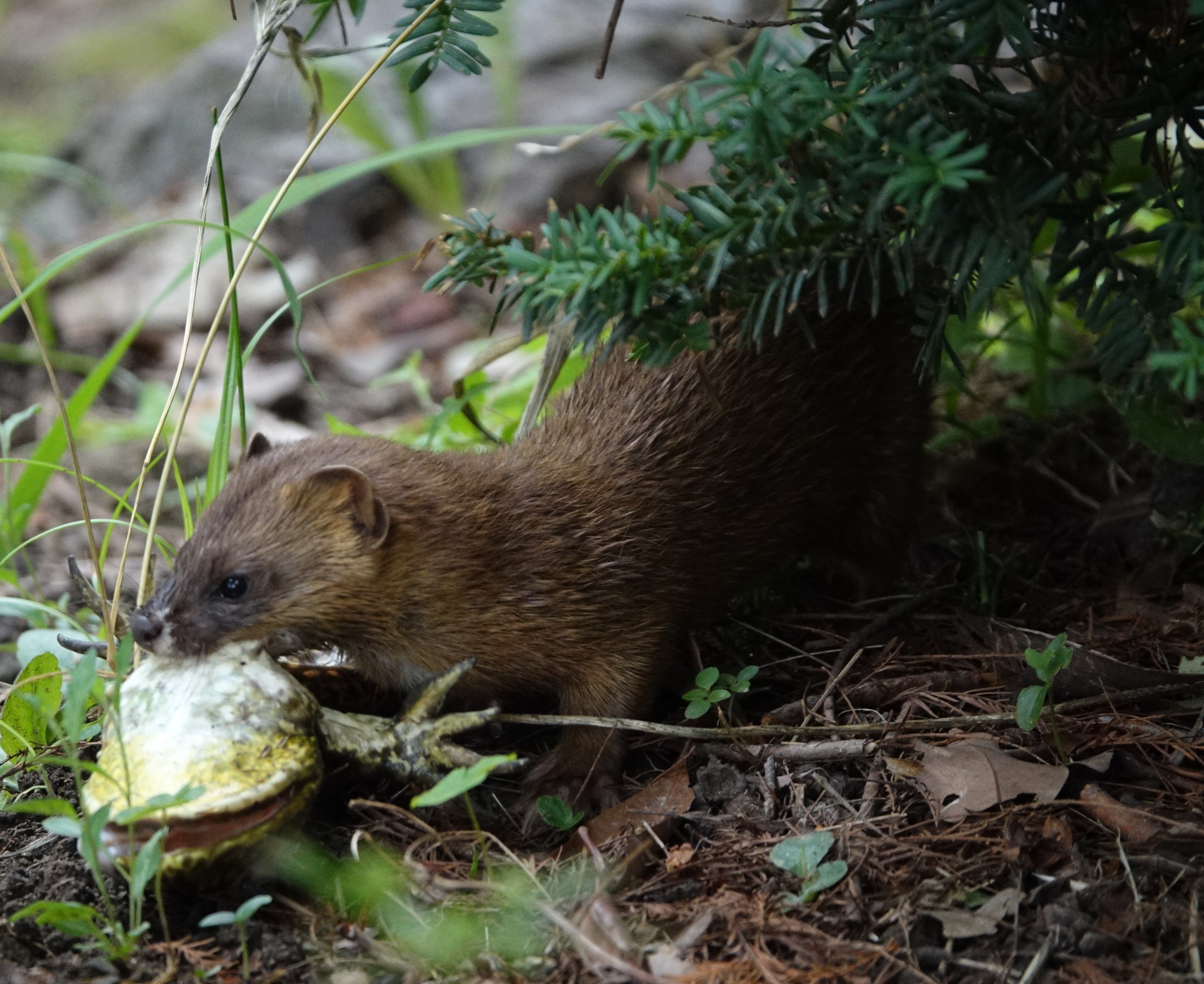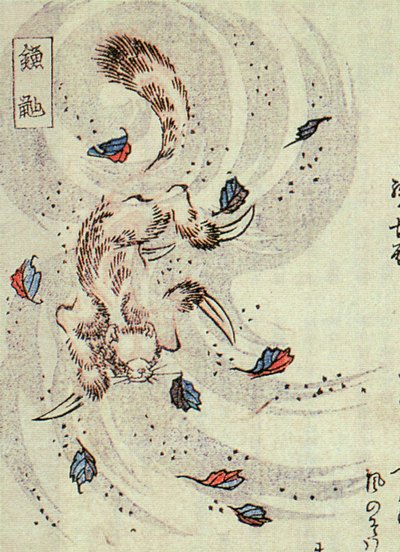|
Japanese Weasel
The Japanese weasel (''Mustela itatsi'') is a carnivorous mammal belonging to the genus '' Mustela'' in the family Mustelidae. The most closely related ''Mustela'' species is the Siberian weasel (''Mustela sibirica''). Its taxonomic species name, ''itatsi,'' is based on the Japanese word for weasel, ''itachi (イタチ).'' It is native to Japan where it occurs on the islands of Honshū, Kyūshū and Shikoku. It has been introduced to Hokkaidō and the Ryukyu Islands to control rodents and has also been introduced to Sakhalin Island in Russia.Kodansha (1993) ''Japan: an illustrated encyclopedia'', Kodansha, Tokyo. It has an orange-brown coloured fur coat with darker markings on the head and varies in size depending on its gender. They have a long slender body, a long tail, relatively short legs and sharp claws. It is often confused with the Siberian weasel which has a different ratio of tail to head and body length. Unlike other species of weasels, their coat does not chang ... [...More Info...] [...Related Items...] OR: [Wikipedia] [Google] [Baidu] |
Coenraad Jacob Temminck
Coenraad Jacob Temminck (; 31 March 1778 – 30 January 1858) was a Dutch people, Dutch Aristocracy (class), aristocrat, Zoology, zoologist and museum director. Biography Coenraad Jacob Temminck was born on 31 March 1778 in Amsterdam in the Dutch Republic. From his father, Jacob Temminck, who was treasurer of the Dutch East India Company with links to numerous travellers and collectors, he inherited a large collection of bird specimens. His father was a good friend of Francois Levaillant who also guided Coenraad. Temminck's ''Manuel d'ornithologie, ou Tableau systématique des oiseaux qui se trouvent en Europe'' (1815) was the standard work on European birds for many years. He was also the author of ''Histoire naturelle générale des Pigeons et des Gallinacées'' (1813–1817), ''Nouveau Recueil de Planches coloriées d'Oiseaux'' (1820–1839), and contributed to the mammalian sections of Philipp Franz von Siebold's ''Fauna japonica'' (1844–1850). Temminck was the first dire ... [...More Info...] [...Related Items...] OR: [Wikipedia] [Google] [Baidu] |
Frog
A frog is any member of a diverse and largely Carnivore, carnivorous group of short-bodied, tailless amphibians composing the order (biology), order Anura (ανοὐρά, literally ''without tail'' in Ancient Greek). The oldest fossil "proto-frog" ''Triadobatrachus'' is known from the Early Triassic of Madagascar, but molecular clock, molecular clock dating suggests their split from other amphibians may extend further back to the Permian, 265 Myr, million years ago. Frogs are widely distributed, ranging from the tropics to subarctic regions, but the greatest concentration of species diversity is in tropical rainforest. Frogs account for around 88% of extant amphibian species. They are also one of the five most diverse vertebrate orders. Warty frog species tend to be called toads, but the distinction between frogs and toads is informal, not from Taxonomy (biology), taxonomy or evolutionary history. An adult frog has a stout body, protruding eyes, anteriorly-attached tongue, limb ... [...More Info...] [...Related Items...] OR: [Wikipedia] [Google] [Baidu] |
Weasels
Weasels are mammals of the genus ''Mustela'' of the family Mustelidae. The genus ''Mustela'' includes the least weasels, polecats, stoats, ferrets and European mink. Members of this genus are small, active predators, with long and slender bodies and short legs. The family Mustelidae, or mustelids (which also includes badgers, otters, and wolverines), is often referred to as the "weasel family". In the UK, the term "weasel" usually refers to the smallest species, the least weasel (''M. nivalis''), the smallest carnivoran species. Least weasels vary in length from , females being smaller than the males, and usually have red or brown upper coats and white bellies; some populations of some species moult to a wholly white coat in winter. They have long, slender bodies, which enable them to follow their prey into burrows. Their tails may be from long. Weasels feed on small mammals and have from time to time been considered vermin because some species took poultry from farms or ... [...More Info...] [...Related Items...] OR: [Wikipedia] [Google] [Baidu] |
Kamaitachi
is a Japanese yōkai often told about in the Kōshin'etsu region and can also refer to the strange events that this creature causes. They appear riding on dust devils and they cut people using the nails on both their hands that are like sickles. One would receive a sharp, painless wound. Origin It was originally thought to be a corruption of the word "kamae tachi" (stance sword), but like the kyūki in the "Yin" part of Toriyama Sekien's Gazu Hyakki Yagyō, they were thus re-used and depicted as a weasel yōkai, eventually becoming established as the yōkai it is now. In the "Mimibukuro" by Negishi Shizumori as well, children in the estate called Kagaya in Edo were enveloped by a whirlwind, and on the surface of their backs, there remained the footsteps of a beast, and it was written that this was the proof of a "kamae tachi" (). As a beast with fur like that of a hedgehog, and a cry like that of a dog, and one that flies through the air with wings, they are said to attack p ... [...More Info...] [...Related Items...] OR: [Wikipedia] [Google] [Baidu] |
Yōkai
are a class of supernatural entities and spirits in Japanese folklore. The word is composed of the kanji for "attractive; calamity" and "apparition; mystery; suspicious." are also referred to as , or . Despite often being translated as such, are not literally demons in the Western sense of the word, but are instead spirits and entities. Their behavior can range from malevolent or mischievous to benevolent to humans. often have animal features (such as the , depicted as appearing similar to a turtle, and the , commonly depicted with wings), but may also appear humanoid in appearance, such as the . Some resemble inanimate objects (such as the ), while others have no discernible shape. are typically described as having spiritual or supernatural abilities, with shapeshifting being the most common trait associated with them. that shapeshift are known as or . Japanese folklorists and historians explain as personifications of "supernatural or unaccountable phenomena to th ... [...More Info...] [...Related Items...] OR: [Wikipedia] [Google] [Baidu] |
Japanese Marten
The Japanese marten (''Martes melampus'') is a marten species endemic to Japan. Description It is in length typically, not counting a long tail, and between in weight. Males are generally larger than females. The pelage varies in color from dark brown to dull yellow with a cream-colored throat. Diet and behavior Both males and females are territorial, and the size of each individual's territory depending on food availability. The Japanese marten is omnivorous, preferring meat from fish, frogs, and small birds and mammals, but consuming insects, fruit, and seeds when necessary. Taxonomy The two confirmed subspecies of Japanese marten are: * ''M. m. melampus'' lives on several of the Japanese islands. * ''M. m. tsuensis'' is endemic to Tsushima Island. It is most closely related to the sable (''M. zibellina''), with which it is sympatric on Hokkaido. Distribution The Japanese marten's presence on Hokkaido and Sado islands are due to introductions. It has been recorded in Sou ... [...More Info...] [...Related Items...] OR: [Wikipedia] [Google] [Baidu] |
Kamaitachi
is a Japanese yōkai often told about in the Kōshin'etsu region and can also refer to the strange events that this creature causes. They appear riding on dust devils and they cut people using the nails on both their hands that are like sickles. One would receive a sharp, painless wound. Origin It was originally thought to be a corruption of the word "kamae tachi" (stance sword), but like the kyūki in the "Yin" part of Toriyama Sekien's Gazu Hyakki Yagyō, they were thus re-used and depicted as a weasel yōkai, eventually becoming established as the yōkai it is now. In the "Mimibukuro" by Negishi Shizumori as well, children in the estate called Kagaya in Edo were enveloped by a whirlwind, and on the surface of their backs, there remained the footsteps of a beast, and it was written that this was the proof of a "kamae tachi" (). As a beast with fur like that of a hedgehog, and a cry like that of a dog, and one that flies through the air with wings, they are said to attack p ... [...More Info...] [...Related Items...] OR: [Wikipedia] [Google] [Baidu] |
Japanese Bush Warbler
The Japanese bush warbler (''Horornis diphone''), known in Japanese as ''uguisu'' (鶯), is an Asian passerine bird more often heard than seen. Its distinctive breeding song can be heard throughout much of Japan from the start of spring. Description The Japanese bush warbler is olive brown above and tending toward dusky colors below. It has pale eyebrows. It has a beak that curves up making it look like it is smiling. The bird is typically in length. Distribution and habitat The Japanese bush warbler is a common year-round resident throughout Japan (except Hokkaidō) and the northern Philippines. In summer the Japanese bush warbler can also be found in Hokkaidō, Manchuria, Korea, and central China. In winter, the bush-warbler can also be found in southern China and Taiwan. It was introduced to Oahu between 1929–1941 and has since spread throughout the main Hawaiian Islands. In summer it ranges from low hills to high mountains, preferring bamboo thickets and black pine tr ... [...More Info...] [...Related Items...] OR: [Wikipedia] [Google] [Baidu] |
Miyake-jima
is an inhabited volcanic island in the Izu archipelago in the Philippine Sea approximately southeast of Tokyo, Japan. As with the other islands in the Izu Island group, Miyake-jima forms part of the Fuji-Hakone-Izu National Park. Etymology There are many theories about the origin of Miyake-jima's name. One theory claims a manuscript about the island's genesis called the ''Miyakeki'' (三宅記), written by a Shinto priest from the island, influenced the name. The manuscript explains how a deity, ''Mashima (三嶋)'', constructed his palace on the island after having built two other houses on neighbouring islands. Each of the houses had their backs facing the palace, thus giving a lined up impression. This belief is known as the 'three house theory'. Another hypothesis says that the shrines on Miyake-jima are historically related to those on Miyajima, an island in Hiroshima Bay. As there are many more speculations, the true origin cannot be known. Geography The island is a ... [...More Info...] [...Related Items...] OR: [Wikipedia] [Google] [Baidu] |
Musk
Musk (Persian: مشک, ''Mushk'') is a class of aromatic substances commonly used as base notes in perfumery. They include glandular secretions from animals such as the musk deer, numerous plants emitting similar fragrances, and artificial substances with similar odors. ''Musk'' was a name originally given to a substance with a strong odor obtained from a gland of the musk deer. The substance has been used as a popular perfume fixative since ancient times and is one of the most expensive animal products in the world. The name originates from the Late Greek μόσχος 'moskhos', from Persian 'mushk', similar to Sanskrit मुष्क muṣka ("testicle"), derived from Proto-Indo-European noun ''múh₂s'' meaning "mouse". The deer gland was thought to resemble a scrotum. It is applied to various plants and animals of similar smell (e.g. muskox) and has come to encompass a wide variety of aromatic substances with similar odors, despite their often differing chemical structure ... [...More Info...] [...Related Items...] OR: [Wikipedia] [Google] [Baidu] |

_Ranomafana.jpg)
.jpg)





.jpg)